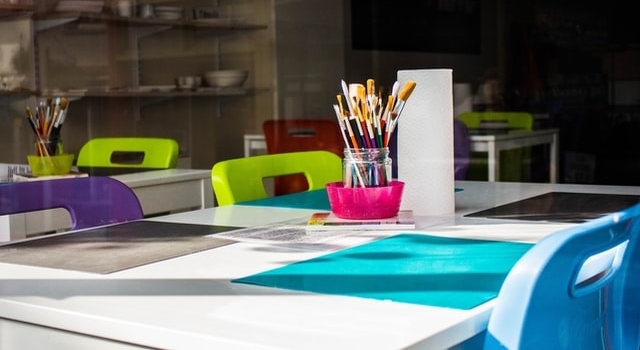Does your child have any reading or learning difficulties? It could be a sign of a visual processing dysfunction.
Visual processing dysfunction (VPD) refers to a variety of vision issues that have nothing to do with nearsightedness or farsightedness.
Visual information processing allows the brain to understand and interpret what the eyes see. When processing is impaired, a child’s ability to excel in school, sports, and social situations is affected.
Even if a child has 20/20 vision, they may have difficulty recognizing words or processing visual information.
Visual processing abilities are also more challenging for a child who has underdeveloped eye focusing, eye movement or eye teaming skills. Fortunately, vision therapy can help to improve these skills.
Schedule an evaluation with a vision therapy eye doctor, who can create a custom vision therapy program to treat your child’s visual processing difficulties.
SEE RELATED: Signs of Visual Processing Information Dysfunction
What is visual information processing (VIP)?
VIP is the brain’s ability to interpret information transmitted to it via their visual system.
The visual system starts with the eyes and then continues with the nerves that connect the eye to the visual cortex in the brain.
Children with VIP difficulties may have clear eyesight, but the issue is the brain’s inability to effectively and accurately comprehend all of the visual information it receives from the visual system.
Visual processing disorder – signs and symptoms
If a child is having trouble with visual processing, signs or symptoms include:
- Bright child, but has reading or learning difficulties
- Difficulty with word memorization
- Frequent reversal of numbers, letters or words, such as top/top and was/saw or the numbers 2/5
- Finds text analysis or comprehension challenging
- Illegible handwriting
- Organizational problems
- Poor retention of visual classroom material
- Tendency to skip lines when reading, or re-reading the same line over and over again.
- Trouble copying from a book or writing within the lines
- Trouble remembering what they’ve seen or read
What are the VIP skills?
1. Visual closure
Visual closure refers to the ability to envision the whole picture when given only partial knowledge. For a child, this is vital for reading fluency because it allows them to identify words by sight rather than having to process each letter in each word.
Word sliders, jigsaw puzzles, and paint by numbers are examples of visual closure activities.
2. Visual discrimination
Visual discrimination is the ability to discern variations in visual images.
This a crucial skill for math, reading, writing and word memory. If a child has difficulty seeing subtle distinctions, it can be difficult for them to distinguish between letters and words like ‘was’ and ‘saw.’
Matching and ‘see the difference’ games are excellent ways to improve this visual capacity.
3. Visual figure-ground
Reading abilities are aided by the ability to differentiate an object from its surroundings. If a child struggles with this, a page with a lot of words is likely to confuse them.
Anyone who excels at the “Where’s Waldo” books has excellent visual figure-ground awareness. This ability can be strengthened by using seek-and-find or iSpy games or jigsaw puzzles.
4. Visual form constancy
Visual form constancy refers to the ability to mentally turn or rotate objects, as well as resize a shape, to fit an image. This allows the child to recognize shapes or letters and words, no matter their orientation.
Tanagrams are a good learning activity that tests a student’s ability to perceive form constancy.
5. Visual memory
Visual memory problems are common in children who struggle with comprehension. Visual memory helps you immediately recall how numbers, letters, shapes or objects appear.
If a child has trouble remembering a sight word from one page to the next or copying details from the board to their notebook, it’s likely that their visual memory needs improving.
A good way to strengthen visual memory skills is through concentration or memory games.
6. Visual sequential memory
The ability to recall mentioned objects in the correct order is known as visual sequential memory.
It’s essential for both reading and spelling. Visual sequential memory problems affect a child who has trouble remembering the order of numbers, shapes or letters in a sequence.
Reassembling comic strips in order or connecting the dots using letters or numbers may help with visual sequential memory.
How vision therapy can help
A vision therapy treatment program can improve a child’s visual processing abilities, allowing them to progress in the classroom and beyond.
LEARN MORE: Vision Therapy for Children
If you suspect your child has a visual processing disorder, it may be time to have your child’s vision evaluated. Schedule an evaluation with a vision therapy eye doctor near you.









